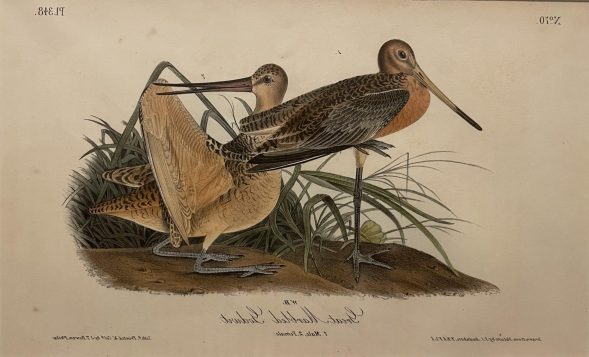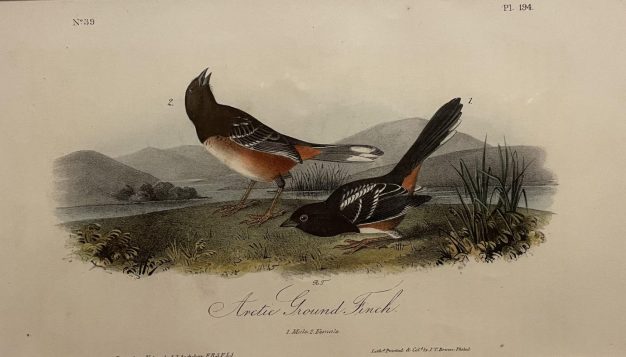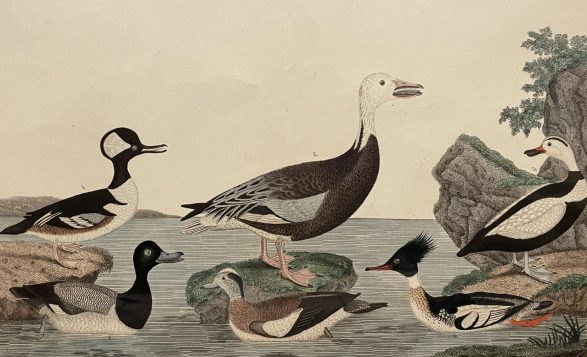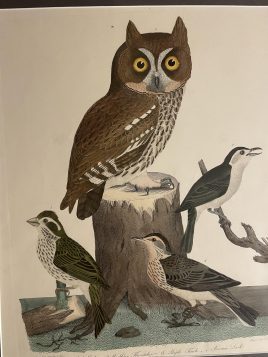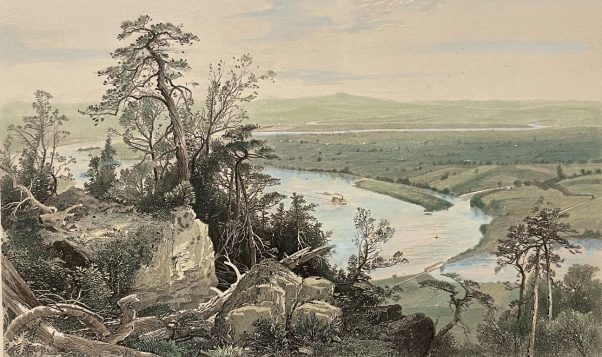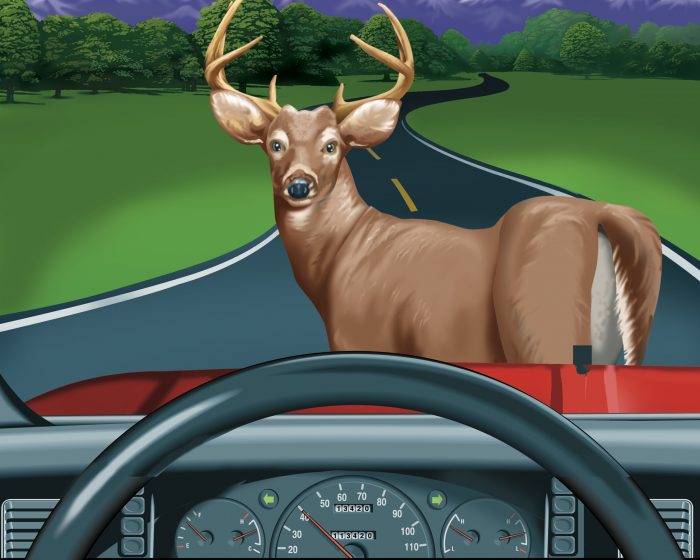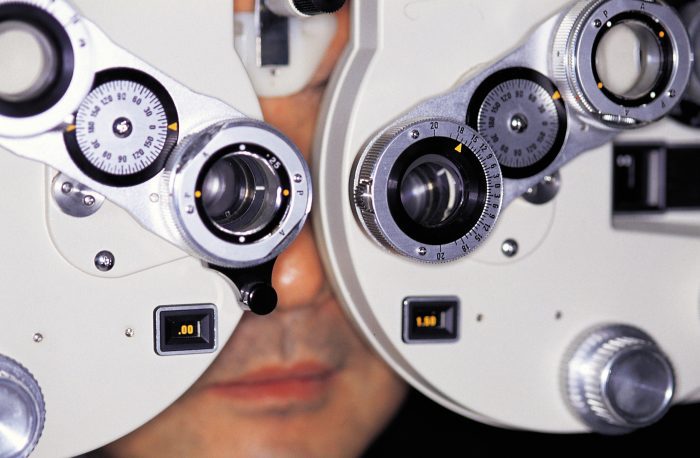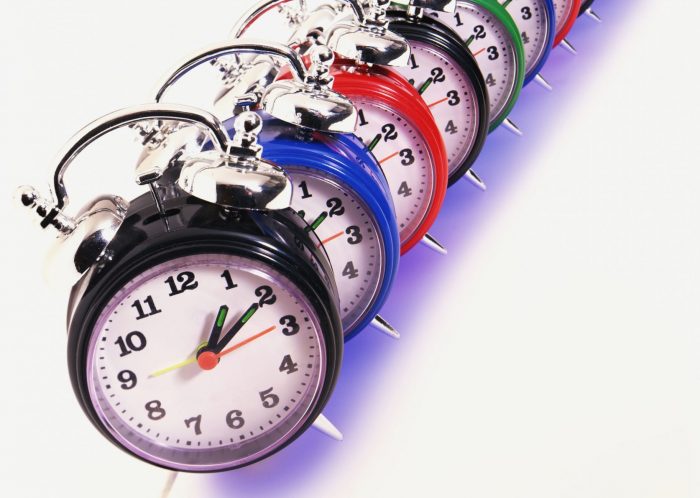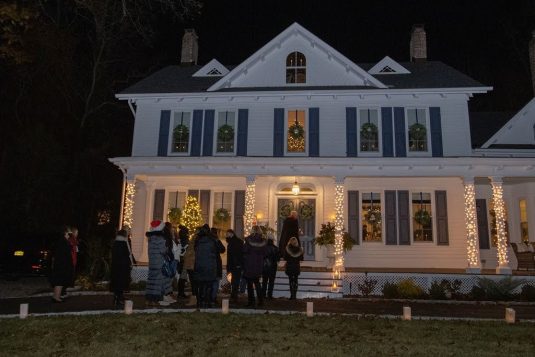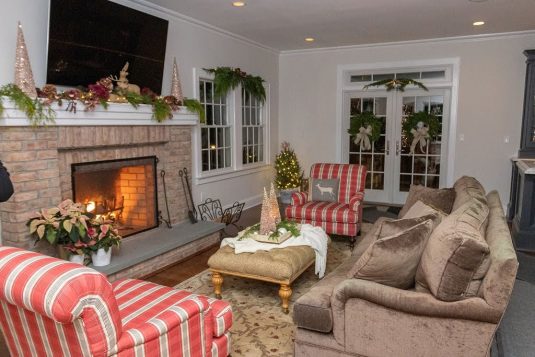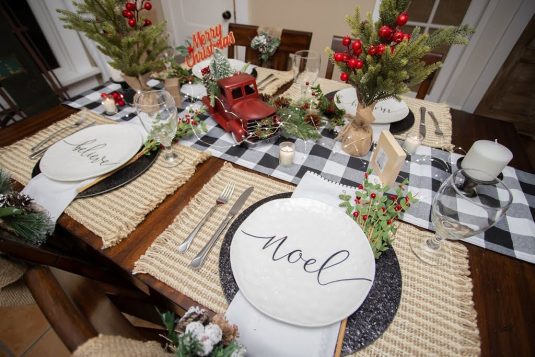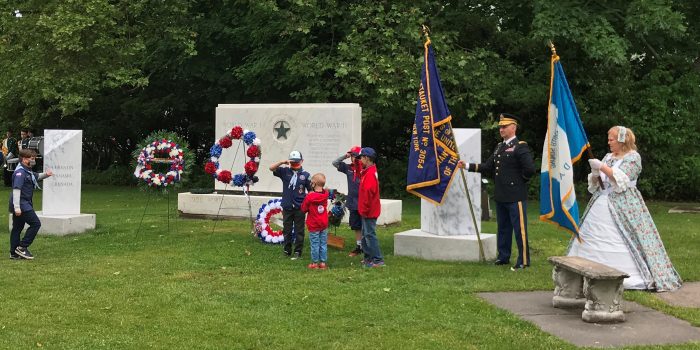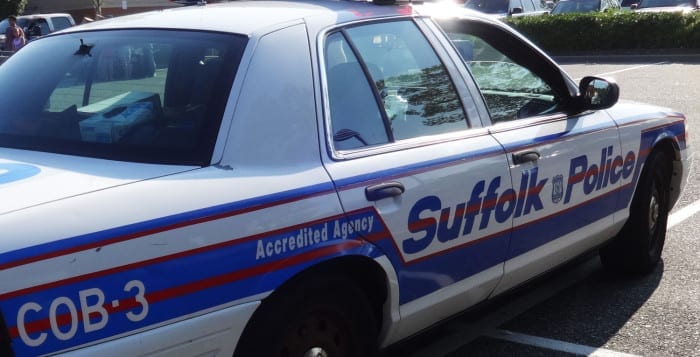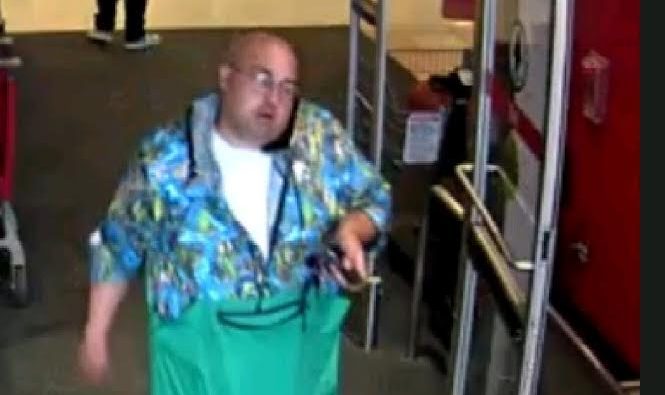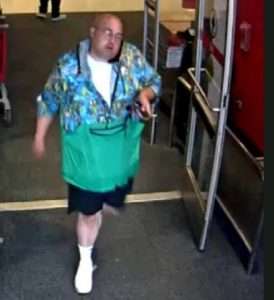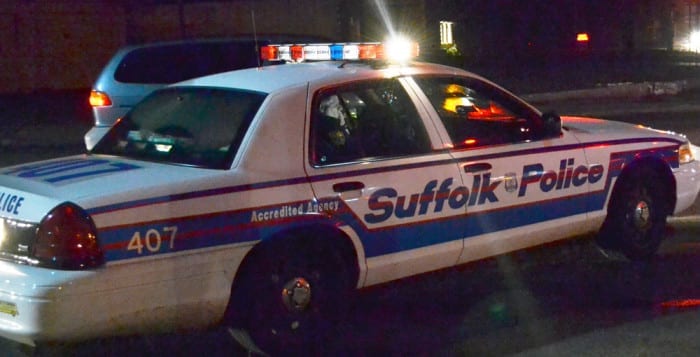Birdlovers art sale to support local environmental groups
By Melissa Arnold
Birds have long fascinated nature enthusiasts of all ages, and it’s easy to understand why. Their wide variety, brilliant colors, seasonal travel and flight skills provide a lot to admire. Those same qualities have made birds a frequent subject in art for generations as well.
On the weekend of Nov. 11, the historic Bates House in Setauket will host a special 3-day art sale and silent auction entitled “Audubon and Friends.” All proceeds from the weekend will be split equally among four local organizations dedicated to protecting Long Island’s wildlife and environment: The Seatuck Environmental Association, the Four Harbors Audubon Society (4HAS), The Safina Center, and Frank Melville Memorial Park.
The idea for the event came from conservationist John Turner and his brother Craig, who shared a love for nature from their early years.
John, who is conservation chair at Seatuck and serves on the board of 4HAS, developed a passion for birding as he watched his father feed the birds as a young boy.
“I was pretty active in conservation even as a teen — when you fall in love with something, you want to see it protected and have the ability to flourish,” said the Setauket resident. “I was really affected by stories of pollution, fires and disasters on the news, and I wanted to do whatever I could to help.”
Craig Turner’s interest in birdwatching developed later, thanks to an old friend from his time in the Air Force.
“He fed all sorts of birds at his home, and whenever I would visit I would become completely captivated by watching them stop to eat,” Craig recalled. “It became a wonderful excuse for me to get outside and see what I could find, and it was a great window into exploring natural history as well.”
Craig would go on to befriend a man who lived near him in Maryland who ran an Audubon magazine and also collected an array of bird depictions, many of them made by early natural history artists. Craig found the prints beautiful and desired to start a collection of his own.
“I thought the prints would look great at home, and then eBay came along, which gave me the ability to acquire things that would otherwise be very expensive, like prints made by John James Audubon in the 1840s,” he said.
By 2012, he had amassed so many prints that he decided to open his own shop in Annapolis, Md. The Audubon and Friends Gallery sold a variety of natural history prints as well as glassware and wood carvings before its closing in 2015.
As much as he treasured each piece, it didn’t make sense for one person to have so many, Craig said to John some time afterward. Why not continue to find ways to share beautiful work with others?
And John had another thought: Why not make it for a good cause as well?
“I wanted to do whatever I could to support the hard work of environmental conservation and protection, and I thought it would be fun to explore the history of natural history art in a talk,” said Craig.
So the event took shape — the beautiful Bates House in Frank Melville Memorial Park would host more than 100 prints from some of the earliest natural history artists, including John James Audubon, Mark Catesby and Alexander Wilson. Depending on value, some pieces will be for sale, while other, rarer pieces will be available in a silent auction held throughout the weekend.
“Audubon wanted to catalogue all the North American birds in life-size prints, and his work became the pinnacle of bird engraving,” Craig explained. “The idea of owning an original natural history print appeals to a lot of people as an important part of Americana, regardless of whether or not they’re birders themselves.”
Among the pieces included at the fundraiser are many first edition, hand-colored prints from John James Audubon’s Royal Octavo edition of “Birds of America,” a foundational work in the field.
Visitors to the show will enjoy light refreshments throughout the weekend, and on Friday, Nov. 11, Craig Turner will offer a special presentation on the history of bird illustration.
It’s a win-win situation for natural history enthusiasts, art lovers and the organizations who will benefit.
“When John Turner approached us about the fundraiser, we thought it was a splendid idea. The art is exquisite and classic,” said Carl Safina, founder of the Safina Center in Setauket. “Birds make the world livable. They are the most beautifully obvious living things in our world and they connect everything, everywhere. It’s truly a tragedy that most people barely notice them, nor do they understand that nearly 200 species can be seen on and around Long Island in the course of a year.”
The Safina Center inspires awareness and action in the community through art, literature and other creative outlets. Safina said that their portion of the funds raised would likely benefit their fellowship program for young, up-and-coming creators.
“Henry David Thoreau said that in wilderness is the preservation of the world, and it’s never been more important to do the work of preservation,” John Turner said. “The biggest thing we can all do is think about the planet in our everyday choices. Some people don’t realize how much of an impact they can make in what they eat, what they buy, and what they reuse.”
The “Audubon and Friends” art sale and silent auction will be held at The Bates House, 1 Bates Road, Setauket on Friday, Nov. 11 from 6:30 to 9 p.m. with a special presentation from Craig Turner titled “A History of Bird Illustration” at 7:30 p.m.; Saturday, Nov. 12 from 10 a.m. to 5 p.m., and on Sunday, Nov. 13 from 10 a.m. to 3 p.m. The event is free to attend. For more information, call the Bates House at 631-689-7054.

